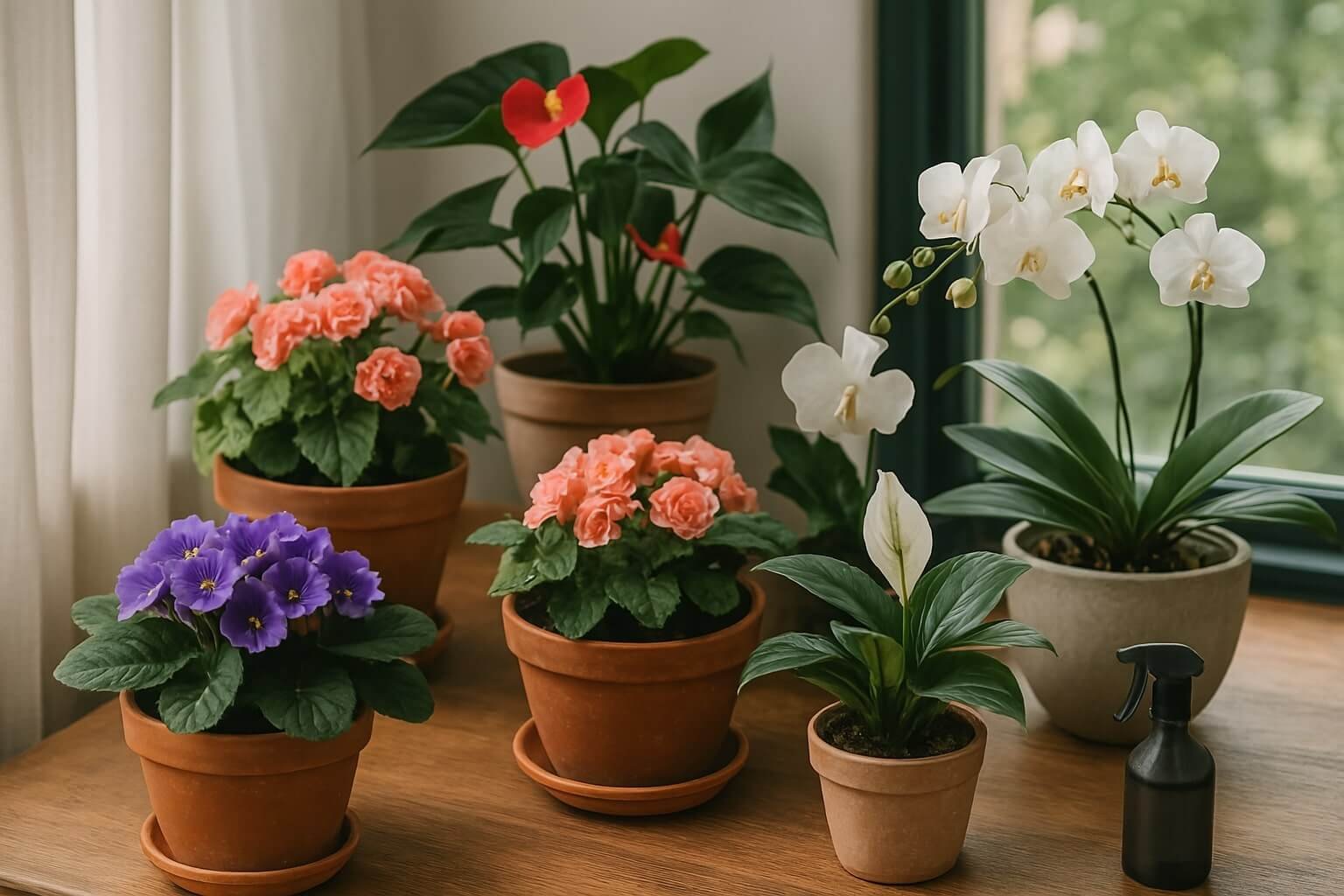A Complete Guide
Indoor flower gardens are more than just a visual delight — they’re a source of joy, tranquility, and even improved air quality. Whether you’re a seasoned plant parent or just starting out, creating a thriving indoor flower garden is easier than you think. This guide walks you through everything from choosing the right flowers to maintaining optimal conditions for year-round blooms.
🌿 Why Choose an Indoor Flower Garden?
- Year-round beauty: Enjoy vibrant blooms regardless of the season.
- Air purification: Many flowering plants help filter indoor air.
- Mood booster: Flowers reduce stress and enhance emotional well-being.
- Space-friendly: Perfect for apartments or homes with limited outdoor space.
🪴 Step 1: Choose the Right Flowers for Indoors
Not all flowers are suited for indoor environments. Here are some top picks:
| Flower Name | Light Needs | Bloom Season | Care Level |
|---|---|---|---|
| African Violet | Bright, indirect | Year-round | Easy |
| Peace Lily | Low to medium | Spring/Summer | Easy |
| Begonia | Bright, indirect | Spring-Fall | Moderate |
| Anthurium | Bright, indirect | Year-round | Moderate |
| Orchids (Phalaenopsis) | Bright, indirect | Winter-Spring | Moderate |
Pro Tip: Choose a mix of continuous bloomers and seasonal flowers to keep your garden lively all year.
☀️ Step 2: Understand Light Requirements
Light is the lifeblood of your indoor flower garden.
- South-facing windows: Ideal for sun-loving flowers like geraniums.
- East or west-facing windows: Great for moderate light plants like begonias.
- Grow lights: A must-have if natural light is limited.
Tip: Rotate your plants weekly to ensure even growth and prevent leaning.
🧂 Step 3: Use the Right Soil and Containers
Healthy roots = happy blooms.
- Soil: Use well-draining potting mix with organic matter.
- Containers: Choose pots with drainage holes to prevent root rot.
- Repotting: Refresh soil and upsize pots annually for vigorous growth.
Bonus: Add a layer of pebbles at the bottom of pots to improve drainage.
💧 Step 4: Master Watering Techniques
Overwatering is the #1 killer of indoor plants.
- Check soil moisture: Stick your finger 1 inch into the soil — if dry, it’s time to water.
- Watering schedule: Most indoor flowers prefer weekly watering.
- Humidity: Mist your plants or use a humidifier, especially in dry climates.
Hack: Use self-watering pots for consistent moisture levels.
🌡️ Step 5: Maintain Ideal Temperature and Humidity
Indoor flowers thrive in stable conditions.
- Temperature range: 18–24°C (65–75°F)
- Humidity: 40–60% is ideal
- Avoid drafts: Keep plants away from heaters, AC vents, and cold windows
Tip: Group plants together to create a microclimate with higher humidity.
✂️ Step 6: Prune and Deadhead Regularly
Pruning keeps your garden tidy and encourages new blooms.
- Deadheading: Remove faded flowers to promote reblooming.
- Trimming: Cut back leggy stems to maintain shape.
- Sanitize tools: Always use clean scissors to prevent disease spread.
Tip: Use pruning as a mindfulness ritual — it’s therapeutic!
🧪 Step 7: Fertilize for Flower Power
Feed your plants to fuel their blooms.
- Frequency: Every 2–4 weeks during growing season
- Type: Use a balanced liquid fertilizer (10-10-10 or 20-20-20)
- Organic options: Compost tea or fish emulsion for eco-friendly feeding
Warning: Avoid over-fertilizing — it can burn roots and stunt growth.
🐛 Step 8: Watch for Pests and Diseases
Indoor gardens aren’t immune to troublemakers.
- Common pests: Aphids, spider mites, mealybugs
- Solutions: Neem oil, insecticidal soap, or rubbing alcohol
- Fungal issues: Improve air circulation and avoid wet leaves
Tip: Inspect plants weekly and isolate any affected ones immediately.
🎨 Step 9: Design Your Garden for Aesthetic Appeal
Make your garden a visual masterpiece.
- Layering: Place taller plants at the back, trailing ones in front.
- Color harmony: Choose flowers that complement your room’s palette.
- Containers: Use decorative pots to enhance the overall look.
Idea: Create a themed garden — tropical, cottagecore, or minimalist.
🌼 Step 10: Rotate and Refresh
Keep your garden dynamic.
- Seasonal swaps: Replace dormant plants with fresh bloomers.
- Rearrange: Change layouts to keep things exciting.
- Add new varieties: Experiment with exotic or rare flowers.
Tip: Document your garden’s evolution with photos — great for blog content!
🙋♂️ Frequently Asked Questions (FAQs)
Q1: Can I grow flowers indoors without sunlight?
Yes! Use LED grow lights to mimic natural sunlight. Many flowering plants thrive under artificial lighting.
Q2: What’s the easiest indoor flower for beginners?
African violets are beginner-friendly, bloom year-round, and require minimal care.
Q3: How do I prevent mold in my indoor garden?
Ensure proper drainage, avoid overwatering, and maintain good air circulation.
Q4: How often should I fertilize indoor flowers?
Every 2–4 weeks during active growth. Reduce frequency in winter.
Q5: Can I mix flowering and foliage plants?
Absolutely! Mixing adds texture and visual interest to your garden.





